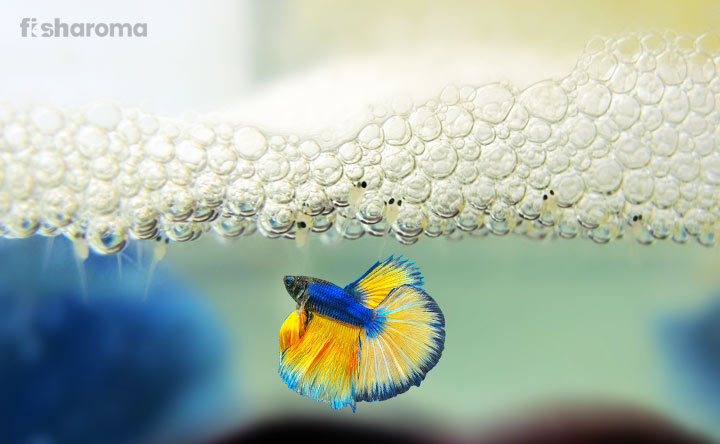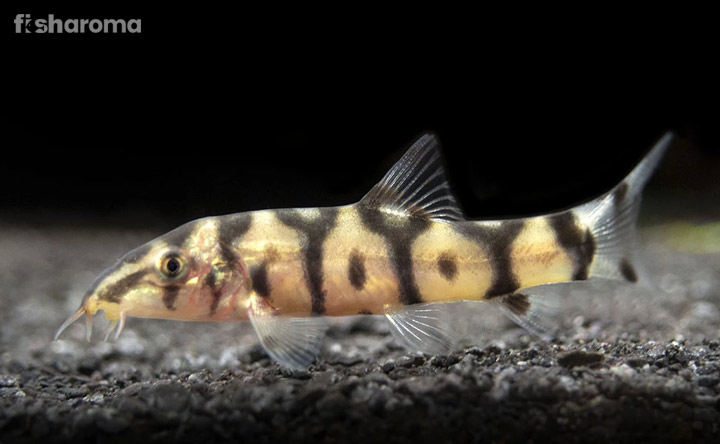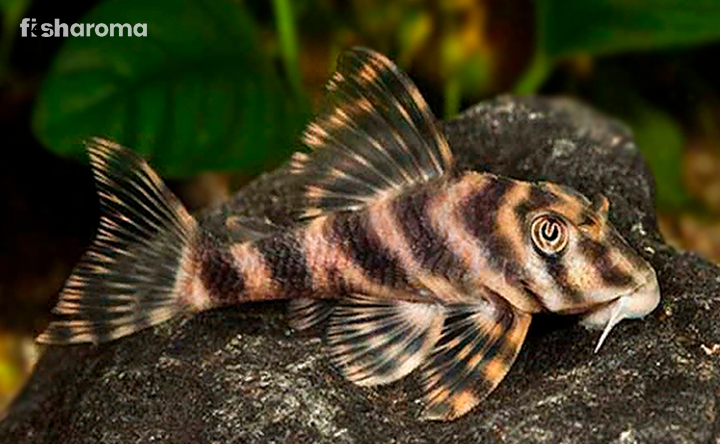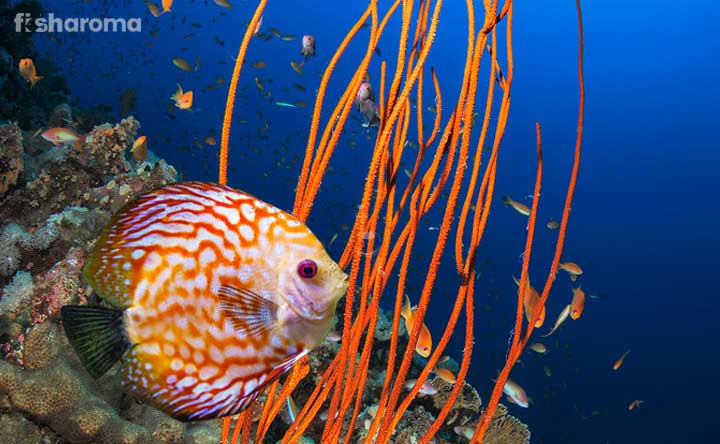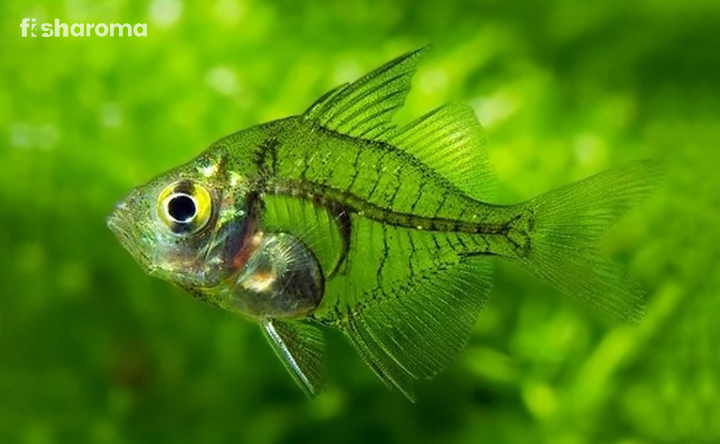Kissing Gourami- An Ultimate Care Guide Of The Kissing Fish
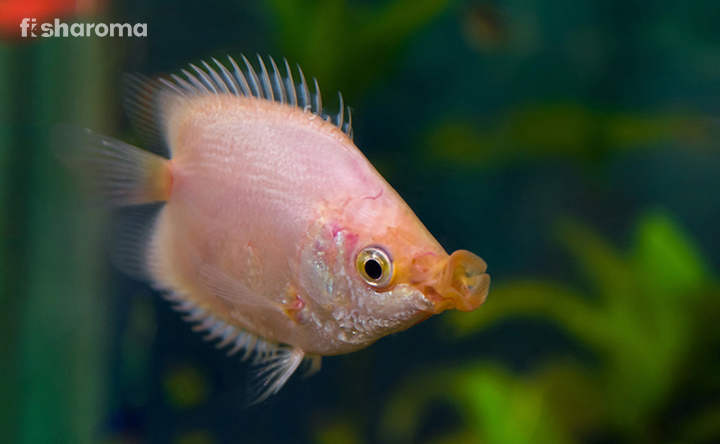
- Origin & Habitat of Kissing Gourami
- Appearance of Kissing Gourami
- Behaviour of Kissing Gourami
- Lifespan of Kissing Gourami
- Diet of Kissing Gourami
- Tank Requirements for Kissing Gourami
- Water Type for Kissing Gourami
- Compatibility of Kissing Gourami
- Breeding of Kissing Gourami
- Diseases of Kissing Gourami
- Summary
The Kissing Gourami, also popularly known as the kisser fish, is an extraordinary species of unique behaviour. They have derived that name from the act of kissing-like action, although there is no scientific proof of why that happens.
Other than their different path of action, these unique Gouramis hold immense beauty, appearing immaculate in the tank. If you are looking forward to own these, this complete care guide is just the right place for you. We tell you everything you may find helpful.
Key Specifications of Kissing Gourami
Here goes a few key elements you need to check before you get started:
| Scientific Name | Helostoma Temminckii |
| Origin | A stretch of land between Thailand and Indonesia. Borneo Sumatra Java |
| Lifespan | 5-7 years. |
| Colours/Patterns | Silver-green (Also known as the “green kisser”)Pinkish tint or flesh-coloured. |
| Temperament | Semi-aggressive |
| Size | Up to 12 inches. |
| Diet | Omnivorous |
| Family | Helostomatidae |
| Compatibility | Mostly compatible with fishes of similar size. |
| Tank size | 50 gallons |
| Care level | Intermediate |
| Water preference | Freshwater |
Overview
Scientifically known as Helostoma Temminckii, the Kissing Gourami is a unique fish of majestic beauty, capable of instantly glorifying the tank’s overall aura. These medium-sized freshwater omnivores are from the Helostomatidae family, native to Asian lands. Known for their protrusible mouth and lined horny teeth, the Kissing Gourami have a unique mouth structure which is a very distinctive feature.
Origin and Habitat of Kissing Gourami
Native to parts of Asia, a Kissing Gourami mostly originates from Thailand to all the way in Indonesia. Other than the origin of focus geographically, they appear to be farmed around Southeast Asia for commercial purposes. They prefer still waters or stagnant water bodies, namely the ponds, streams or so.
Kissing Gourami species is from the Helostomatidae family, is monotypic in nature. These kissers are a labyrinth too, as they have a secondary breathing structure other than the regular fish’s gill.
Appearance of Kissing Gourami
Right off the bat, the Kissing Gourami fishes have a very distinct lip structure. It is almost like they have an eternal pout on, and this is one of the many reasons why they are even named that way.
Around their jaw area, another additional joint visibly enhances the angle of their mouth. This plus portion allows them to feed on a variety of feedable easier. Other than that, they have shorter fins, both dorsal and anal, while their pectoral fins appear long and sort of spherical.
The variety, when it comes to the vibrancy, size or aura of Kissing Gourami as a whole, the information goes on and on. Let us have a look:
Colour
As beholders of beauty and vibrancy, these tropical wonders come in two classic colours. What do we think of when we hear someone mentioning a kisser fish? A pink-pouted Gourami. Hence, pink being the most prevalent colour in the market, the silverish green variant is no less.
The green variants are natural specimens, originally found in the wild. If you inspect closely, there have stripes, laterally placed all over their body. Otherwise, they can either have spots, blotches, or straight up patches of colour when it comes to the variety of patterns, they can exist in.
Size
They grow up to 12 inches as an adult, whereas the juveniles are naturally very tiny (about 2 inches). In the aquarium scenario, they have been noticed to have an average size of about 6 inches.
Behaviour of Kissing Gourami
Kissing Gouramis can be a little bit territorial sometimes, and seem to show slight aggression as a result. They fight with their plump lips, it almost looks like the act of kissing, and that is how their name actually originated in the first place.
Categorized as semi-aggressive, these fishes are not really that predatory as their unique lip shape limits them from doing so. It is a safe choice to keep a pair of these kissers together, in that way, the aggression stays between them without hampering the other tropical species.
Lifespan of Kissing Gourami
In captivity, the average lifespan is expected to be about 5 years, or maybe a little over 7 years in the wild. Still, there have been instances of them living for up to 25 years, which is longer than their textbook life expectancy.
Diet of Kissing Gourami
The care routine for a kisser can be quite tricky, but feeding them? not so much. An average Kissing Gourami can eat most things that can be consumed by them within 5 minutes. Foods containing Carotenoids are very beneficial for the health purpose of these Gouramis.
However, they may be omnivorous on the books, still are visibly a little more inclined towards the herbivorous diet. It is good to feed them spirulina flakes in that case, as it satiates them. Their unique mouth structure prevents them from being predatory to most fishes.
In that scenario, them being omnivores serves the purpose well. The omnivorous preference of these beauties, lets you choose from a quite variable menu. So, let’s check out a few things you can feed them:
- Plankton
- Dried fish food like flakes or pellets.
- Algae
- Insects
- Vegetables
Tank Requirements for Kissing Gourami
Tank requirements serve as a very necessary element, when it comes to the overall care process of the Kissing Gourami fish. Let us have a look:
Tank Lid
Generally, a tank lid helps in protecting the water inside from dust. It prevents the water from getting polluted, by obstructing any sort of exposure from unwanted foreign particles.
Otherwise, this variant of Gourami is a slow swimmer, mostly dwelling in the bottom, or near the surface. A tank lid limits the risk of the fish falling out, as even if the possibility, in this case, is slim. It is still good to be prepared with the apt measures nonetheless.
Tank Size
A minimum tank size of 50 gallons is our recommendation, they like to have their space to swim about.
Substrate
Big rocks and large gravels are preferred as substrates for this kisser variant of Gouramis, as they like to have hiding spots. Especially when an aggressive fish is charging our precious Gourami, this type of substrate will help support that, alongside their nature.
Filter
A filter is necessary as they produce ample amounts of waste. Other than that, filters also provide oxygen and purify the water. This makes the tank environment favourable for our precious fishes in the tank.
Ornaments
As we have already discussed in the article previously, they like to have enough hiding spots. To properly emulate their natural environment, ornamental elements like driftwood, floating plants or rocks is a good idea.
Lighting
Although, this variant of Gouramis is good with full lighting, excess of that can make them act skittish. We suggest you keep your aquarium lighting balanced as per their comfort, and play it safe.
Presence of Flora
Vegetation is necessary for the livelihood of our beautiful Gouramis, but over-crowding is never a good option. There needs to be enough room for them to swim, so balanced vegetation works well. Presence of the same, benefits and purifies the water with its natural qualities, thus promoting the fish’s health.
Cleaning Method
The tank needs proper cleaning for various reasons. Firstly, these pouty beings produce loads of waste. This alone, is enough for a reason to change substrates from time to time. Other than that, the tank walls should be wiped with the proper application of a cloth, preferably cotton.
Water Type for Kissing Gourami
Water Type or the water parameters are really necessary when it comes to the health and overall well-being of the fish. The profile is something that is better well-maintained first, if you are planning to work on a tank.
Kissing Gouramis are really hardy as species, and they can tolerate a range of parameters like a hero. Cutting to the chase, we know the importance of a proper water profile. Here are a few things you may need to know while tank prepping:
| Hardness | 5-30 dGH |
| Temperature | 22-28 Degrees Celsius |
| pH | 6.8-8.5 |
Hardness
They like their water soft, hence a hardness of 5-30 is preferred.
Temperature
The temperature should be about 28 Degrees Celsius, where the bottom-line is at least 22 Degrees Celsius. Warm water is a preference for this species, so maintaining this particular parameter is necessary.
pH
pH is really important for the health of these Gouramis, as excess or under in the range can seriously hamper their condition. A perfect balance of alkaline and acidic concentration needs to be maintained by keeping the range limited to 6.5-8.5.
Compatibility of Kissing Gourami
As semi-aggressive beings, it is obvious that they are more compatible with the similar nature lot. They can partially do well in a peaceful community, as they are not certainly predatory. Their mouths do not particularly support that nature, so they prefer dwelling about in their layers of comfort in water.
Suitable Tank mates
Still, in order to simplify your choices let us present you with some suitable tank buddies you can place these beauties with:
- Pictus Catfish
- Tiger Barb
- Rosy Barb
- Small Cichlid breeds
- Congo Tetra
- Yoyo Loach
- Archerfish
- Swordtails
- Chinese Algae Eaters
Unsuitable Tank mates
If there’s suitable, there’s definitely unsuitable. These Gouramis don’t sit well with the peaceful, having all that subtle aggression in them. Since they are termed as semi-aggressive, they may end up bullying other fishes that are smaller and peace-loving.
Breeding of Kissing Gourami
You are in luck, as breeding the Kissing Gouramis is not that complicated. Moreover, not only the sex determination is easy, but the entire ease of the process makes it pretty much beginner-friendly.
Cutting to the chase, these fishes prefer to lay floating eggs over bubble nests, unlike most Gourami fishes. The healthy parent fishes are placed in a separate breeding tank. After the process is done, the female lays about 50 eggs, which simply floats about in water. Then the parent fishes are safely removed with the usage of a net, or syphon preferably.
Diseases of Kissing Gourami
Some commonly seen diseases are:
- Hole in the head disease- It is caused by a Parasite, precisely Protozoan. Some other names for the same are shortly HLLE, LLE and LLD. It is a very common freshwater disease, but creatures of salinity are not spared either. This disease affects the skin on the face and head of the fish. The lateralis system is hugely affected which helps the fish determine movent and vibrations underwater.
- Parasite or Ich- Parasites as a matter of fact, is single-handedly capable of affecting the overall health. Inflicting bruises, missing scales, lethargy, trouble breathing and more, these parasites like anchor worms and lice can seriously affect the fish’s health, and is a very serious matter.
The Kissing Gouramis get affected by most freshwater diseases.
Treatment
A few of the classic ways of prevention and treatment are as follows:
- Maintaining the quality of tank water by keeping an all-time closer look at the parameters, and proper maintenance of the same.
- Quarantining the affected and safe removal of the parasite in case of any parasitic disease is necessary.
- Substrates need to be replaced from time to time, under-maintenance there will lead to the growth of unwanted foreign elements that can seriously hamper the health of our fishes.
- Low stress environment seems to contribute well to the fish’s well-being by preventing clinical maladies.
Summary
However, to summarize it all, Kissing Gourami fishes are a majestic species. They have everything you look for in aquarium fishes. They have the behavioural charm, grace and appeal that makes them an all-rounder.
Kissers, other than being beginner-friendly fishes are vibrant, with eye-catching colour contrasts. All in all, this fish is a must pick if you are planning out a nice, decent sized aquarium.
Similar Care Guides you may like:
- Paradise Gourami – Similarly sporty and aggressive, this species is truly beautiful and intriguing. You’re one step away from knowing everything about them!
- Honey Gourami – Belong from the same group of species, this beautiful, rather peaceful fish is the one to check out. What’s stopping you from getting this honey-coloured wonder?
- Dwarf Gourami – This small fish can fit its majesty in a small tank, how good is that? Right here is all you need to know about this multi-coloured being.



